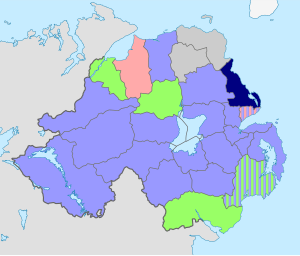
The counties of Ireland are historic administrative divisions of the island. They began as Norman structures, and as the powers exercised by the Cambro-Norman barons and the Old English nobility waned over time, new offices of political control came to be established at a county level. The number of counties varied depending on the time period, however thirty-two is the traditionally accepted and used number.

Dungannon and South Tyrone Borough Council was a local council in Northern Ireland from 1973 until 2015. It was originally named Dungannon District Council, gaining borough status and adding "South Tyrone" to its name on 25 November 1999, after petitioning the Secretary of State for the Environment. In May 2015, under local government reorganisation in Northern Ireland it merged with Cookstown District Council and Magherafelt District Council to become Mid-Ulster District Council.

Castlereagh was a local government district with the status of borough in Northern Ireland. It merged with Lisburn City Council in May 2015 under local government reorganisation in Northern Ireland to become Lisburn and Castlereagh City Council, with a small amount being transferred to Belfast City Council.
Local government in Northern Ireland is divided among 11 districts. Councils in Northern Ireland do not carry out the same range of functions as those in the rest of the United Kingdom; for example they have no responsibility for education, road-building or housing. Their functions include planning, waste and recycling services, leisure and community services, building control and local economic and cultural development. The collection of rates is handled centrally by the Land and Property Services agency of the Northern Ireland Executive.

Ballymoney was a local government district with borough status in Northern Ireland. It was headquartered in Ballymoney. Other towns in the borough included Dervock, Dunloy, Cloughmills and Rasharkin. The borough had a population of 31,224 according to the 2011 census.
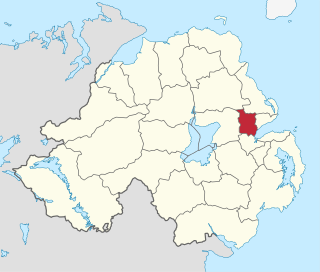
Newtownabbey Borough Council was a Local Authority in County Antrim in Northern Ireland, on the north shore of Belfast Lough just immediately north of Belfast. The Council merged with Antrim Borough Council in April 2015 under local government reform in Northern Ireland to form Antrim and Newtownabbey Borough Council.

North Down Borough Council was a Local Council in County Down in Northern Ireland. It merged with Ards Borough Council in May 2015 under local government reorganisation in Northern Ireland to become North Down and Ards District Council.

The Local Government (Ireland) Act 1898 was an Act of the Parliament of the United Kingdom of Great Britain and Ireland that established a system of local government in Ireland similar to that already created for England, Wales and Scotland by legislation in 1888 and 1889. The Act effectively ended landlord control of local government in Ireland.
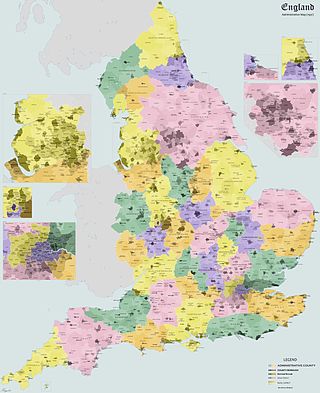
Municipal boroughs were a type of local government district which existed in England and Wales between 1835 and 1974, in Northern Ireland from 1840 to 1973 and in the Republic of Ireland from 1840 to 2002. Broadly similar structures existed in Scotland from 1833 to 1975 with the reform of royal burghs and creation of police burghs.
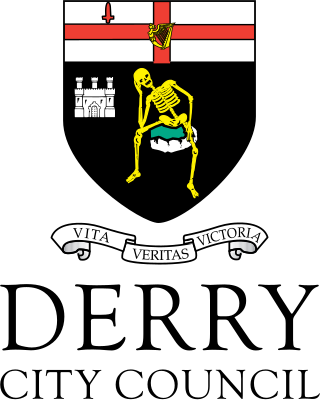
Derry City Council was the local government authority for the city of Derry in Northern Ireland. It merged with Strabane District Council in April 2015 under local government reorganisation to become Derry and Strabane District Council.

Belfast City Council is the local authority with responsibility for part of Belfast, the capital and largest city of Northern Ireland. The council serves an estimated population of 345,006 (2019), the largest of any district council in Northern Ireland, while being the smallest by area. Belfast City Council is the primary council of the Belfast Metropolitan Area, a grouping of six former district councils with commuter towns and overspill from Belfast, containing a total population of 579,276.
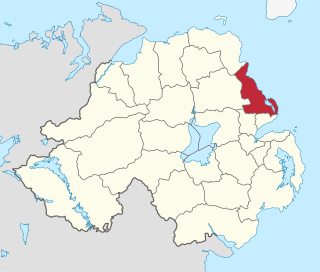
Larne Borough Council was a Local Council in County Antrim in Northern Ireland. It merged with Ballymena Borough Council and Carrickfergus Borough Council in May 2015 under the reorganisation of local government in Northern Ireland to become Mid and East Antrim Borough Council.
Durham City Council elections were generally held every four years between the reforms of 1974 and the council's abolition in 2009. Durham was a non-metropolitan district in County Durham, England. On 1 April 2009 the council's functions passed to Durham County Council, which became a unitary authority.

Northern Ireland is divided into six counties, namely: Antrim, Armagh, Down, Fermanagh, Londonderry and Tyrone. Six largely rural administrative counties based on these were among the eight primary local government areas of Northern Ireland from its 1921 creation until 1973. The other two local government areas were the urban county boroughs of Derry and Belfast.

The first elections to the new local authorities established by the Local Government Act 1972 in England and Wales and the new Northern Ireland district councils created by the Local Government Act 1972 took place in 1973. Elections to the existing Greater London Council also took place.

The Traditional Unionist Voice (TUV) is a unionist political party in Northern Ireland. In common with all other Northern Irish unionist parties, the TUV's political programme has as its sine qua non the preservation of Northern Ireland's place within the United Kingdom. A founding precept of the party is that "nothing which is morally wrong can be politically right".

Antrim and Newtownabbey is a local government district in Northern Ireland. The district was created on 1 April 2015 by merging the Borough of Antrim with the Borough of Newtownabbey. The local authority is Antrim and Newtownabbey Borough Council.
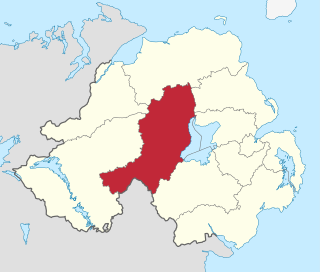
Mid Ulster is a local government district in Northern Ireland. The district was created on 1 April 2015 by merging Magherafelt District, Cookstown District, and the Borough of Dungannon and South Tyrone. The local authority is Mid Ulster District Council.
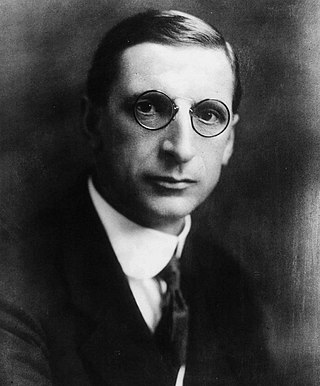
Elections were held in January and June 1920 for the various county and district councils of Ireland. The elections were organised by the Dublin Castle administration under the law of the then United Kingdom of Great Britain and Ireland (UK), and held while the Irish War of Independence was pitting UK forces against those of the Irish Republic proclaimed in 1919 by the First Dáil. Elections were held in two stages: borough and urban district councils in January; and county and rural district councils in June. Sinn Féin, which had established the First Dáil, won control of many of the councils, which subsequently broke contact with Dublin Castle's Local Government Board for Ireland and instead recognised the republican Department of Local Government. The election results provide historians with a barometer of public opinion in what would be the last elections administered on an all-island basis: the Government of Ireland Act 1920 passed at the end of the year effected the partition of Ireland from 1921, though the elections for the two home rule Parliaments envisaged by it were held on the same day; No further elections would be held simultaneously across the island of Ireland until 1979, when representatives of the Republic of Ireland and Northern Ireland to the European Parliament were elected. The next local elections were held in 1924 in Northern Ireland and in 1925 in the Irish Free State.

Fermanagh County Council was the authority responsible for local government in County Fermanagh, Northern Ireland, between 1899 and 1973. It was originally based at the Enniskillen Courthouse, but moved to County Buildings in East Bridge Street, Enniskillen, in 1960.


